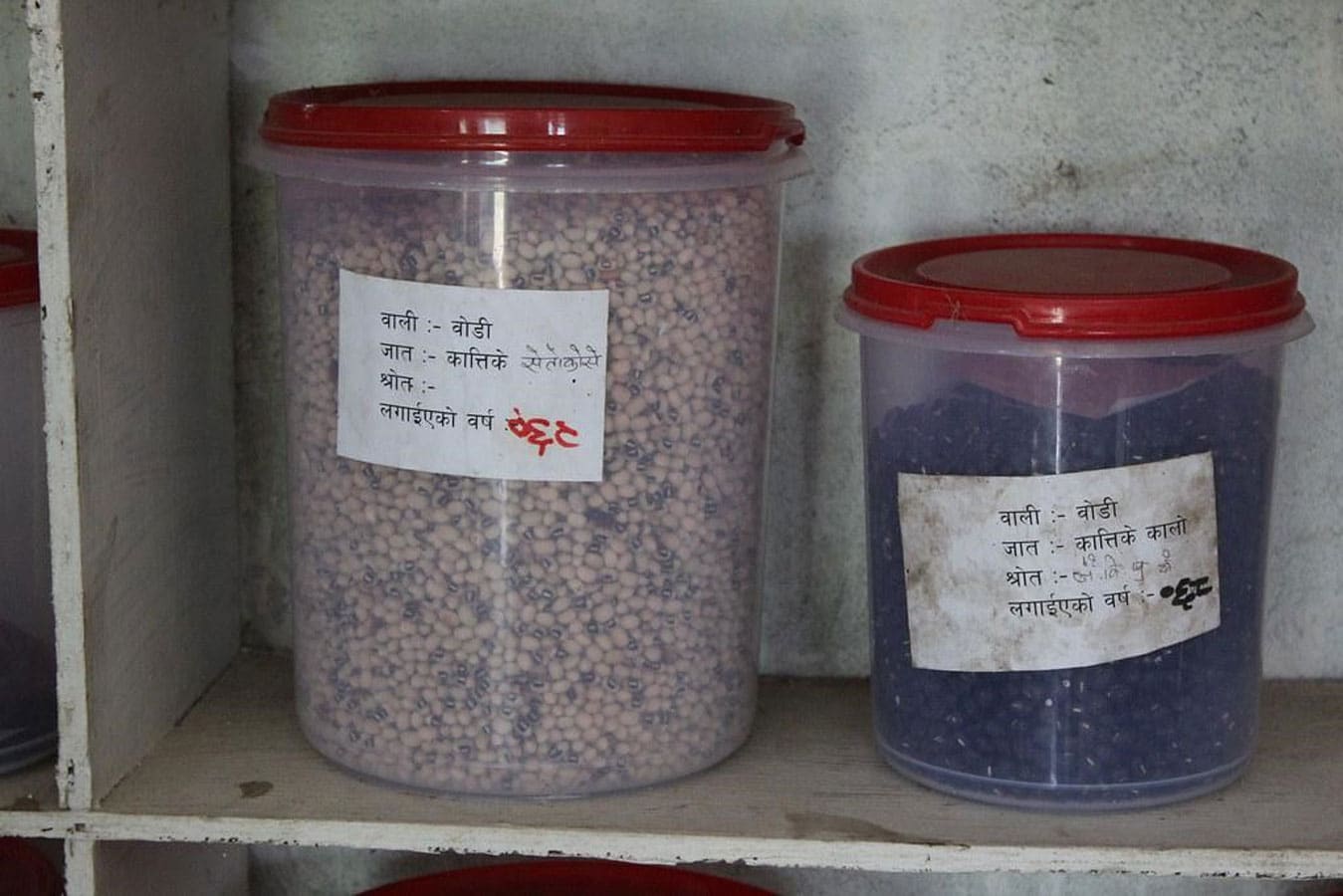Farmers have been storing, repurposing, and even sharing seeds for thousands of years. Formal public seed banks to preserve important seeds may have existed as early as ancient Persia. In recent years, a hybrid model has emerged: community seed banks or community seed libraries. It’s a simple innovation that’s proving remarkably popular among smallholder farmers.
“Community seed banks based on present technology is expected to be a step forward in rural areas.”
Unlike the vast, sophisticated seed vaults built by governments, community seed banks operate just as the name implies. Seeds are collected from a farming community and then stored in simple, easy-to-maintain facilities for ready access and use, with users expected to replenish “withdrawals” in a timely manner. Grow Further recently spoke at length with Sherry Manning, founder of Global Seed Savers, an organization that sets up community seed libraries in the Philippines. As Manning explained to us, seeds are usually kept in storage for two years or so. Some facilities can hold them for four years. Proponents say they’re a wonderful way for smallholder farmers to store and share local varieties of crops just as their ancestors did for millennia, only in a more organized fashion. Now, international researchers are starting to discover the potential benefits of organizing community seed banks for improving smallholders’ well-being and enhancing food security.
Community seed banks are quickly becoming mainstream in small-scale agricultural settings. Bioversity International published a seed bank “working manual” tailored for South Asia. Their manual is aimed at “presenting the basics of establishing a community seed bank (CSB) from scratch, keeping the socio-economic and environmental conditions of South Asia in mind,” as the authors explained. The manual emphasizes small-scale seed banking innovations to keep costs low by making the most of easy-to-use technologies. The ideal approach involves minimal use of energy, they said, because “CSB based on present technology is expected to be a step forward in rural areas of India and other [Southeast] Asian countries where availability of electricity supply is not assured.”
Pandemic-driven interest
The global COVID-19 pandemic has heightened interest in community seed banks. In a recent assessment jointly published by the International Center for Tropical Agricultural Research (CIAT) and Bioversity, scholars explain how the pandemic afforded opportunities to strengthen community seed banks in East and Southern Africa. Lockdowns during the crisis and the disruption in global trade made it difficult for farmers to procure seeds from their regular dealers. According to a 2020 CIAT survey, 93% of farmers polled in Kenya said they had trouble procuring seeds they needed during the pandemic and 98% of smallholder farmers in Zimbabwe said the same thing. “Production levels decreased everywhere while prices went up, and due to mobility restrictions, it became much more difficult to sell and exchange seed,” the research team noted. Community seed banks emerged as a resilient alternative to formal seed systems.
The marks of success
This summer, the Fridtjof Nansen Institute (FNI) published a detailed brief on their strategy to use community seed banking to enhance smallholder agriculture in Malawi. The brief lists key factors underpinning the success of a community seed bank. These include technical support, location, the type of facility used, competent governance, a potential for building up seed bank members’ capabilities, the degree of social cohesiveness in a community, income generated from seed banking, and whether a seed bank can be incorporated into a broader national network.
Grow Further is watching the development of community seed banks and has seen several interesting proposal concepts run by or in collaboration with them.
— Grow Further
Note: Susan Mathew, a contractor to Grow Further, is a board member at Global Seed Savers.
Photo credit: Seeds in storage at a community seed bank in India. Bioversity International.




